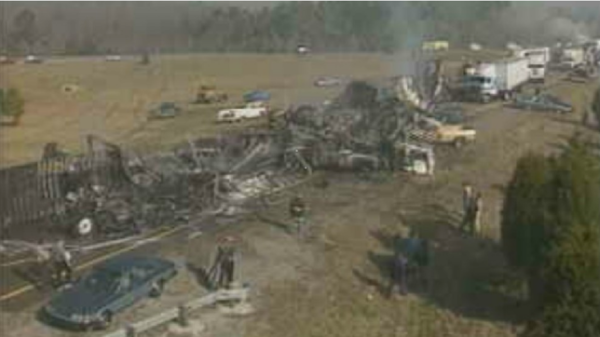26 Years Ago Today: Deadly East Tennessee Fog I-75 Crash
If you have ever driven I-75 between Chattanooga and Knoxville, you know that it is one of the prettiest drives in the country. With beautiful mountain panaramas and gorgeous rivers, the scenery is tremendous. But the area is also prone to dense fog, especially during the early morning hours and especially near the Hiawassee River. The interstate is very busy in this area, carrying over 30,000 vehicles per day on average.
Just after 9 a.m. on December 11, 1990, visibility near the Calhoun, Tennessee exit dropped to less than ten feet. Subsequently, two tractor trailer trucks in the southbound lanes of I-75. The second truck had crashed into the first, which was traveling at a reduced rate of speed As the drivers inspected their trucks, an automobile crashed into the rear truck, and in turn was struck by another big rig. A large fire began. Meanwhile, collisions began occurring in the northbound lanes.
Eventually, ninety nine cars were involved in the disastrous chain reaction collisions. Twelve people died. The National Transportation Safety Board concluded that the cause of the collisions was varying driver response to the reduced visibility.
Many of the survivors and other victim families sued Bowater Inc., claiming that steam from the huge newsprint facility located near the interstate exacerbated the fog problem and contributed to the accident. The company ended up settling, claiming it was less expensive to settle than finish the suit.
The Tennessee Department of Transportation implemented a sophisticated fog detection and response system that covers 19 miles of the highway. The system monitors visibilities and reduces speed limits when fog is present. When visibilities drop to below 1,320 feet, the speed limit is reduced to 50 mph. Electronic signs communicate the information to drivers. When visibility drops to below 480 feet, the speed limit is dropped to 35 mph. A worst case scenario is implemented when the visibility drops to below 240 feet and gates close the interstate at entrance ramps.
Between October and March, the system is activated about once per week. The interstate has been closed twice since it was implemented. It has worked. There were over 200 crashes and 18 fatalities on the stretch of highway between 1973 and 1992. Since then, only one crash has occurred in fog.
Category: Alabama's Weather
















